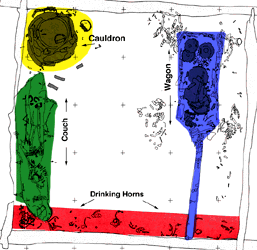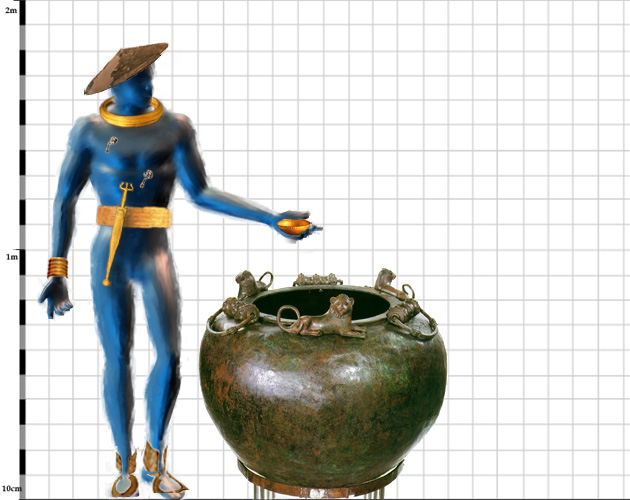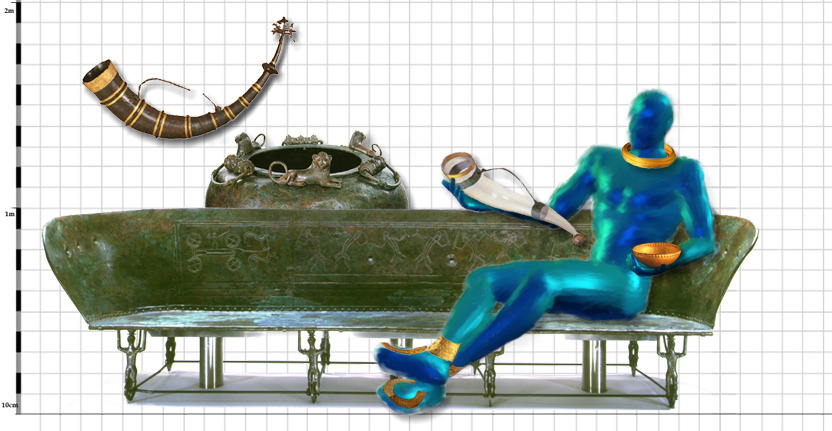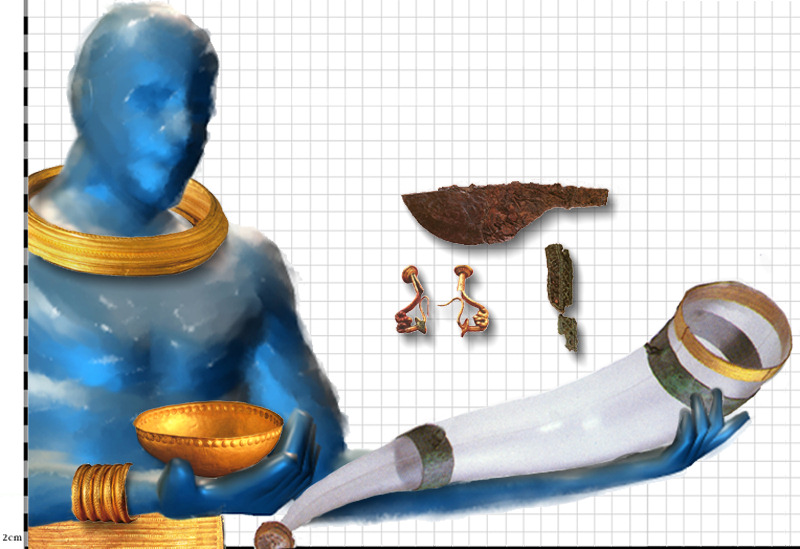The tumulus was originally ca. 6 m high and 60 m in diameter. Surrounded by a wide trench, it was artificially built up and protected at its base by stones and wood posts -- at approx. 3 m intervals, longer vertical wood posts were set into the stone packing encircling the mound. The central chamber with its inner dimensions of 4.7 x 4.7 m was set below ground level into a stone- and wood-filled shaft ca. 2.5 m deep and ca. 7.4 x 7.5 m. It was completely constructed of wooden planks. The stone packing fell in when the roof eventually collapsed and crushed the contents, which are remarkably well preserved nevertheless.
The remains of the
tumulus, the central chamber and several secondary burials were
excavated in 1978 and 1979 and have been carefully studied and
reconstructed. Publication of this exemplary excavation is ongoing;
Biel
1985 and Krauße 1996 have presented many of the
important

objects, while Körber-Grohne and others have concentrated on the paleobiological remains.
The walls and floor of the chamber were entirely covered with woven and embroidered textiles; a great deal of plant fibers and animal fur attest to the presence of further organic material in the tomb. Some of the objects themselves were carefully wrapped in cloth.
The deceased, a man of perhaps 45 years of age at death, and 1.87 m tall, was laid out in state on a bronze couch along the west wall of the chamber.
On and around his body were various objects of personal adornment: a birch-bark hat, a gold torc and bracelet -- his belt, dagger and even his shoes were covered with gold foil. At his feet stood an enormous bronze cauldron of Western Greek manufacture; it was filled with mead. At his head and along the south wall hung nine drinking horns.
Other drinking and banqueting
vessels were placed on or in the cauldron, and stacked on the bed of
the wagon that occupied the eastern
portion of the chamber.

The composite below places the "chieftain" in a seated position on the bronze couch; arguments that the couch could only have functioned as a Greek kline find the couch too low to be sat on. The 35 cm height of the wheeled figure supports seem adequate to me to allow the occupant to sit and not necessarily to recline on the couch, bolstering my contention that he reclines in the tomb not because he is at symposion but because he is dead. The composite does not include the thick cushioning of plant and animal materials that originally covered the couch.


Original images courtesy Württembergisches Landesmuseum; some digitally altered and reassembled after photographs published by Krauße 1996; also
Biel
1985, 92 f., 149 f.